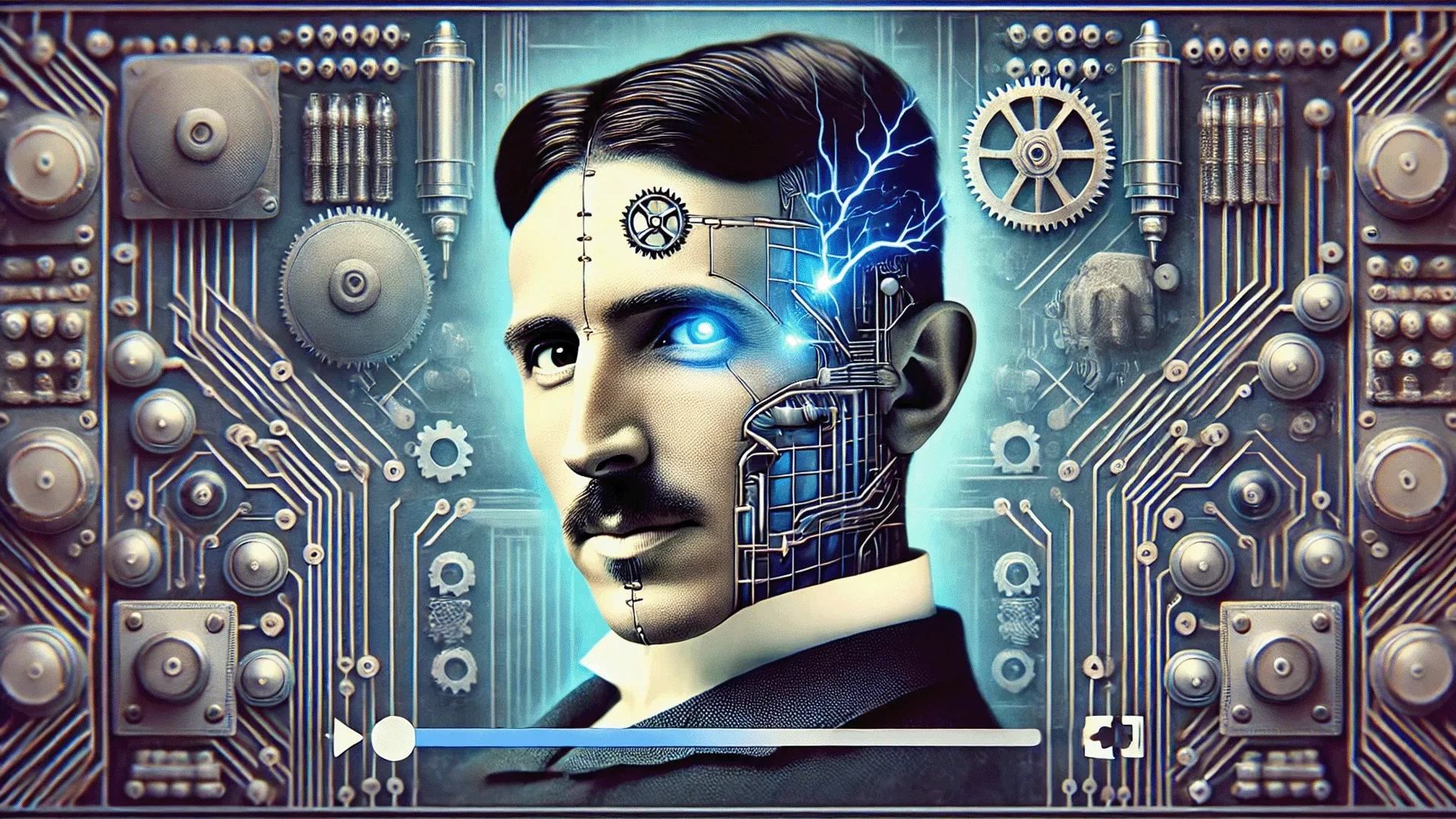In a world where the internet, smart devices, and autonomous technologies shape our daily lives, it's fascinating to think about the visionaries who
In a world where the internet, smart devices, and autonomous technologies shape our daily lives, it’s fascinating to think about the visionaries who laid the foundation for these innovations. One such luminary is Nikola Tesla, the inventor whose mind seemed years ahead of his time. Known for his groundbreaking work with alternating current (AC), wireless communication, and more, Tesla’s imagination was limitless. But what if this brilliant mind had turned his gaze toward artificial intelligence (AI)? How might our world have evolved if Tesla had pioneered this groundbreaking technology?
This speculative exploration dives deep into how AI, under Tesla’s tutelage, could have emerged decades earlier, changing the trajectory of technological history.
The Visionary Mind of Nikola Tesla
Born in 1856 in what is now Croatia, Nikola Tesla was a prodigy whose ideas transcended the confines of his era. More than just an electrical engineer, he was a futurist whose musings often bordered on the fantastical. Tesla foresaw technologies like wireless communication and automated machines long before they became a reality. His vision of a connected world laid the groundwork for many modern conveniences, from the radio to the smartphone.
Tesla’s famous quote, “The present is theirs; the future, for which I really worked, is mine,” perfectly encapsulates his belief in progress and innovation. His pursuit of knowledge was ceaseless, driven by the desire to unlock the secrets of nature and harness them for the betterment of humanity. It is within this context that we explore how Tesla might have approached the development of AI.
Early Attempts at Automata: Tesla’s Proto-AI
Tesla’s first brush with what we could now consider the edges of artificial intelligence came in 1898 when he introduced a radio-controlled boat at Madison Square Garden. This “teleautomaton” was a marvel at the time, showcasing a machine that could obey commands wirelessly—a concept so ahead of its time that spectators suspected Tesla was performing a magic trick. However, this was no illusion. It was a glimpse into a future where machines could act without direct human interaction.
If AI is defined as the creation of systems that can perform tasks typically requiring human intelligence, then Tesla’s experiments with automation were a nascent form of this idea. He envisioned machines that could perform laborious tasks, make decisions, and operate independently—concepts that closely parallel modern AI developments.
How Tesla Might Have Approached AI
1. Electromechanical Marvels
Given Tesla’s mastery of electrical circuits and electromechanical devices, his version of AI would likely have started with a focus on electromechanical systems. Imagine a laboratory filled with the hum of gears, whirring dynamos, and glowing vacuum tubes. Tesla would likely have created machines capable of “learning” basic tasks through mechanical feedback loops and electrical signals.
Send emails, automate marketing, monetize content – in one place
Think of an early 20th-century automaton that could adjust its functions based on input variables, such as temperature or light—primitive compared to today’s neural networks, but groundbreaking for its time. Tesla’s AI would not have run on silicon chips but on a complex mesh of electrical relays and mechanical components.
2. Pattern Recognition and Early Cognitive Machines
Tesla’s fascination with nature’s rhythms and patterns would have significantly influenced his approach to AI. He believed that everything in the universe had a pattern that could be discerned, analyzed, and mimicked. Applying this belief, Tesla might have developed machines that could recognize patterns in weather data, market trends, or even human speech.
Imagine an early cognitive machine that could “listen” to Morse code transmissions and translate them into text—an ambitious project for Tesla but entirely conceivable. This would represent the first steps toward natural language processing, long before computers as we know them existed.
3. Wireless Neural Networks
One of Tesla’s most enduring ideas was the transmission of energy and information without wires. He visualized a global network where information could be transmitted seamlessly across distances. If he had applied this to AI, Tesla might have developed an interconnected system of mechanical nodes capable of sharing data wirelessly, acting as a rudimentary neural network.
Picture a world where, in the early 1900s, factories communicated with each other through Tesla’s wireless transmitters. Machines could share performance metrics, optimize production, and self-correct malfunctions—a precursor to the Internet of Things (IoT). This vision would have accelerated technological advances by decades, creating an era where AI-enhanced automation was commonplace well before the digital age.
The Ethical Dilemmas Tesla Would Have Faced
Tesla was no stranger to moral contemplation when it came to the power of his inventions. He famously refused to work on projects that could be weaponized, even when financial pressures mounted. If Tesla had ventured into AI, it’s likely that he would have focused on creating technology aimed at improving lives, rather than seeking personal gain.
However, the ethical implications of AI would have been substantial, even for Tesla. He may have wrestled with the following questions:
- Could AI lead to job displacement? Tesla’s AI might have been designed to reduce the need for human labor, raising questions about how to manage societal shifts.
- What safeguards would be necessary? Tesla, with his acute awareness of unintended consequences, might have been among the first to advocate for regulatory frameworks and fail-safes to ensure that AI remained a tool for good.
- Would the technology be misused? Tesla was wary of his work being co-opted for harmful purposes. If he had developed AI, he might have implemented strict ethical guidelines and fail-safes to prevent misuse.
The Potential Impact on the Industrial Revolution
If Tesla had successfully created AI in the early 1900s, the implications for the Industrial Revolution would have been profound. We might have seen:
- Automation of Factory Labor: Factories running on Tesla’s AI-driven systems would have dramatically increased productivity while reducing human error.
- Advances in Communication: Wireless AI could have facilitated an interconnected world much earlier, foreshadowing the modern internet by decades.
- Futuristic Transportation: Tesla’s vision for vehicles powered by wireless electricity might have dovetailed with his AI inventions, leading to early versions of autonomous cars and trains.
The ripple effects of Tesla’s AI would not have been confined to industrial settings. Imagine medical devices capable of diagnosing illnesses based on data analysis or early weather prediction systems that leveraged pattern recognition. The potential advancements are as varied as they are staggering.
The AI Race in a Tesla-Led World
Tesla’s hypothetical AI development would have spurred intense competition among inventors and industrialists of the era. Thomas Edison, Tesla’s longtime rival, might have shifted his focus to building a more commercially viable version of AI. The race would have pushed innovation at a breakneck pace, turning the early 20th century into an era defined by electromechanical “thinking machines.”
Countries would have invested in Tesla’s technology, integrating it into military and governmental operations, albeit with ethical concerns. Tesla’s insistence on AI as a force for good might have influenced global treaties to limit the misuse of such powerful technology—a conversation that still echoes today.
A Modern Perspective: Lessons from a Hypothetical Tesla AI
Reflecting on what Tesla might have brought to the world of AI allows us to draw several key lessons:
- Prioritizing Ethics Over Profit: Tesla’s AI would have likely emphasized humanitarian goals over financial ones. This is a reminder for modern AI developers to consider the long-term societal impact of their work.
- Holistic Development: Tesla’s AI would have balanced technical capabilities with a deep respect for nature, perhaps pushing the world to consider sustainable AI development much sooner.
- Collaborative Progress: By envisioning AI as a collaborative tool rather than a disruptive force, Tesla’s hypothetical inventions could have set a precedent for technology as a partner in human progress, not just a replacement.
The Legacy of a Tesla-Inspired AI
In this imagined reality, the world that emerged from Tesla’s early AI work would have been a blend of wonder, progress, and caution. Machines that thought and acted like humans would not just be tools but partners, ingrained with an ethical compass that mirrored their creator’s ideals.
Tesla’s AI would have focused on solving grand challenges: eradicating disease, predicting natural disasters, and fostering peace through technological foresight. His legacy would be a technological landscape enriched by intelligence that mirrors not just human capacity but human intention and morality.
Send emails, automate marketing, monetize content – in one place


